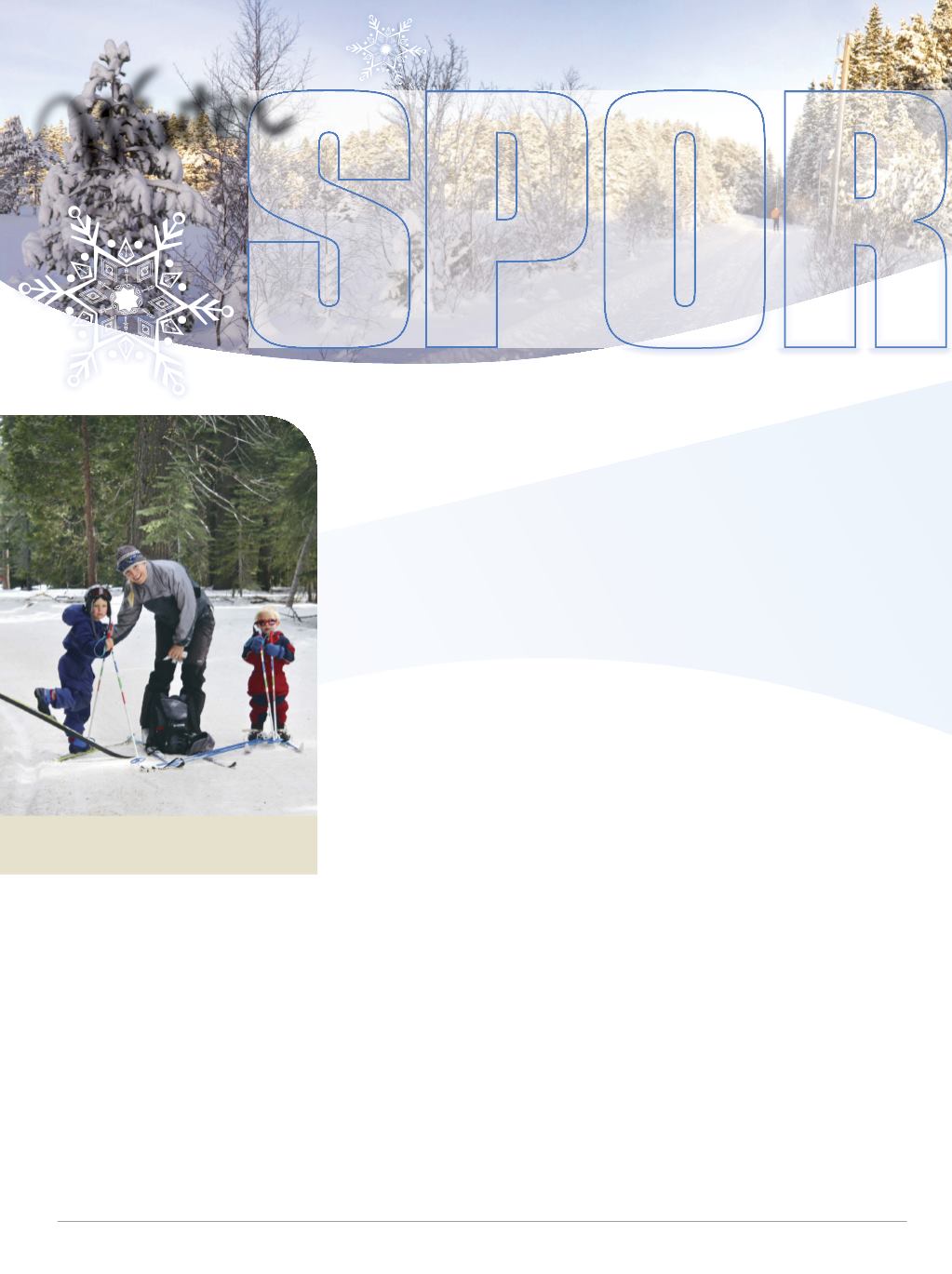
12
The
snow and ice of winter are
tailor-made for sports. They’re
slick. They’re slippery. They’re
perfect for sliding, gliding, skating
and jumping—all at high speeds.
Which also makes them perfect for
getting hurt.
Winter sports injuries send hun-
dreds of thousands of people in
the U.S. to hospitals and doctors’
o ces every year, according to
the American Academy of Ortho-
paedic Surgeons (AAOS). Many,
if not most, of those injuries are
avoidable.
The following advice comes from
the AAOS and the American
College of Emergency Physicians,
as well as other experts in sports
medicine and safety.
Stay safe inany sport
Warmup before you set out.
Cold
muscles, tendons and ligaments
are ripe for injury.
Wear the right stu .
That means
protecting yourself with the
appropriate safety gear, such as
goggles, helmets and padding. It
also means dressing in layers to
keep your body warmand dry as you
sweat in the cold.
Check your equipment before-
hand.
This is especially important
if the equipment has been in stor-
age all summer.
Get trained.
If you’re new to a
sport, consider taking lessons
from a quali ed instructor, par-
ticularly for sports like skiing and
snowboarding.
Buddy up.
Don’t set out solo
on your snowboard or skis or go
skating alone. Go with a buddy or
a group. Let someone know where
your group is heading and when
you plan to return.
Stay hydrated.
Drink water—
before, during and after exercise.
Keep an eye on the weather
forecast.
Be aware of any storms
or sharp drops in temperature.
Even your youngest family members
can enjoy their day on the mountain.
What you can do to keep safe—and active—this season
It’s always a good idea to talk
to your doctor before the start
of a sports season—especially
if you’re older than 50, have
any health concerns or have
been inactive for a while.
SPO
W


